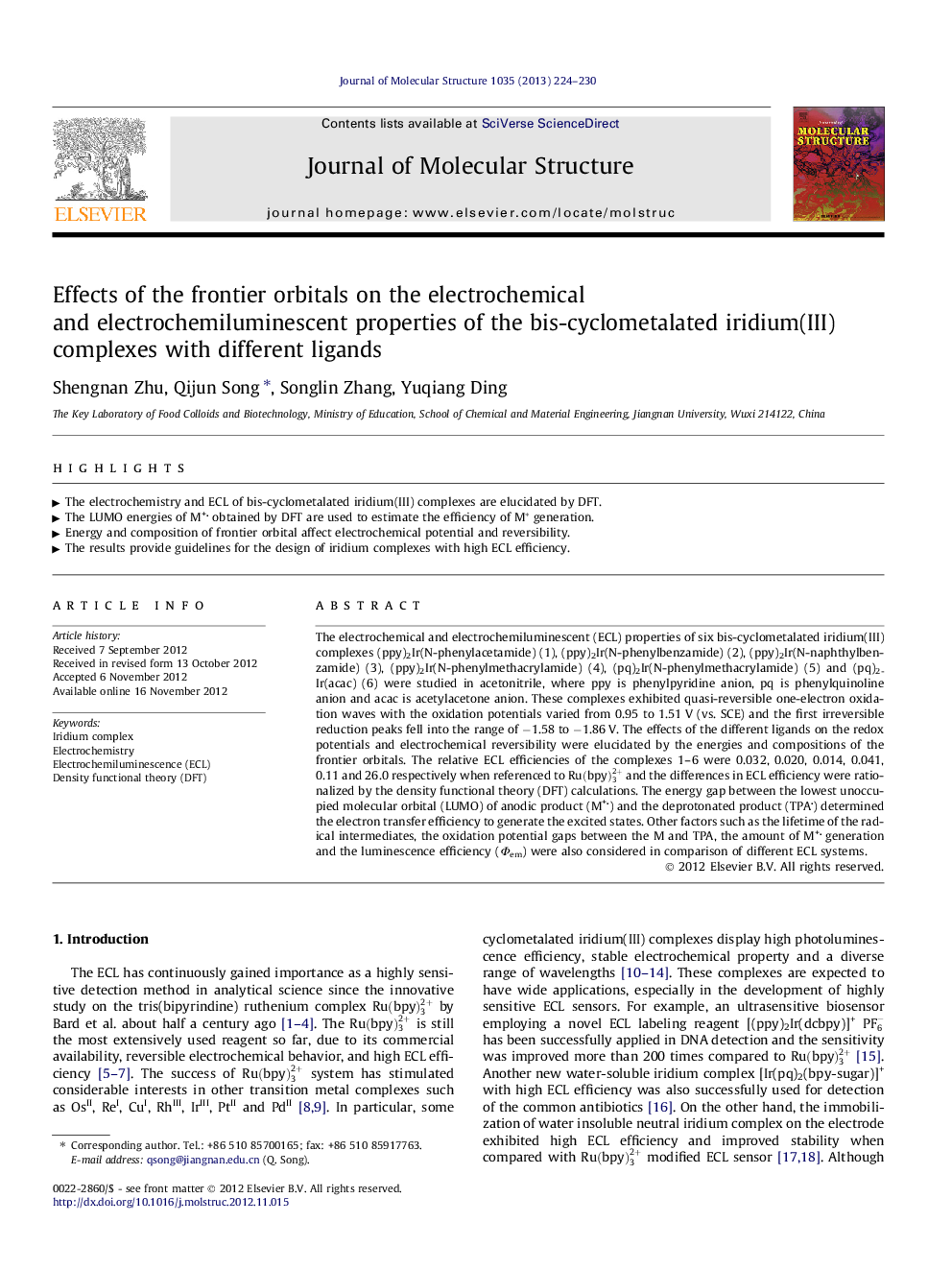| Article ID | Journal | Published Year | Pages | File Type |
|---|---|---|---|---|
| 1403166 | Journal of Molecular Structure | 2013 | 7 Pages |
The electrochemical and electrochemiluminescent (ECL) properties of six bis-cyclometalated iridium(III) complexes (ppy)2Ir(N-phenylacetamide) (1), (ppy)2Ir(N-phenylbenzamide) (2), (ppy)2Ir(N-naphthylbenzamide) (3), (ppy)2Ir(N-phenylmethacrylamide) (4), (pq)2Ir(N-phenylmethacrylamide) (5) and (pq)2Ir(acac) (6) were studied in acetonitrile, where ppy is phenylpyridine anion, pq is phenylquinoline anion and acac is acetylacetone anion. These complexes exhibited quasi-reversible one-electron oxidation waves with the oxidation potentials varied from 0.95 to 1.51 V (vs. SCE) and the first irreversible reduction peaks fell into the range of −1.58 to −1.86 V. The effects of the different ligands on the redox potentials and electrochemical reversibility were elucidated by the energies and compositions of the frontier orbitals. The relative ECL efficiencies of the complexes 1–6 were 0.032, 0.020, 0.014, 0.041, 0.11 and 26.0 respectively when referenced to Ru(bpy)32+ and the differences in ECL efficiency were rationalized by the density functional theory (DFT) calculations. The energy gap between the lowest unoccupied molecular orbital (LUMO) of anodic product (M+) and the deprotonated product (TPA) determined the electron transfer efficiency to generate the excited states. Other factors such as the lifetime of the radical intermediates, the oxidation potential gaps between the M and TPA, the amount of M+ generation and the luminescence efficiency (Φem) were also considered in comparison of different ECL systems.
► The electrochemistry and ECL of bis-cyclometalated iridium(III) complexes are elucidated by DFT. ► The LUMO energies of M+ obtained by DFT are used to estimate the efficiency of M* generation. ► Energy and composition of frontier orbital affect electrochemical potential and reversibility. ► The results provide guidelines for the design of iridium complexes with high ECL efficiency.
